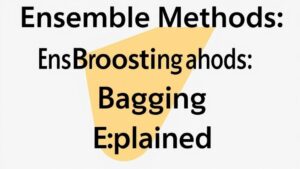Inviting Exploration of Advanced Strategies
Curious about how advanced algorithms are influencing investment strategies? Let’s dive into the mechanics of modern trading.
Incorporating Fundamental Analysis into Algorithms
In the ever-evolving world of finance, algorithmic trading has taken center stage, allowing traders to capitalize on market opportunities with speed and efficiency. However, while many algorithms focus on technical indicators and price patterns, integrating fundamental analysis can provide a more holistic view of market dynamics. This article delves into the importance of fundamental analysis in algorithmic trading, explores the methodologies for integration, and highlights real-world applications.
Fundamental analysis is the evaluation of a security’s intrinsic value by examining related economic, financial, and other qualitative and quantitative factors. Investors and traders use fundamental analysis to determine whether a security is overvalued or undervalued.
Key Components of Fundamental Analysis
- **Financial Statements**: Analyzing a company’s balance sheet, income statement, and cash flow statement to assess its financial health.
- **Economic Indicators**: Tracking macroeconomic data such as GDP growth, unemployment rates, and inflation to gauge the economic environment.
- **Industry Analysis**: Understanding the dynamics of the industry in which a company operates, including competition and market trends.
- **Qualitative Factors**: Evaluating management quality, brand strength, and market position, which can influence a company’s long-term performance.
By incorporating these components, traders can make informed decisions that go beyond mere price movements, aligning their strategies with underlying economic realities.
The Role of Algorithms in Trading
Algorithms are sets of rules or instructions designed to perform specific tasks automatically. In trading, algorithms can execute orders at optimal prices, manage risk, and analyze vast amounts of data quickly.
Benefits of Algorithmic Trading
- Speed**: Algorithms can process information and execute trades in milliseconds, capitalizing on fleeting market opportunities.
- Efficiency**: Automation reduces the need for human intervention, minimizing errors and freeing up time for strategic analysis.
- Backtesting**: Algorithms can be tested against historical data to refine strategies before deployment.
Types of Trading Algorithms
- **Market Making Algorithms**: Provide liquidity by placing buy and sell orders simultaneously.
- **Trend Following Algorithms**: Identify and capitalize on upward or downward market trends.
- **Arbitrage Algorithms**: Exploit price discrepancies between different markets or instruments.
- **Mean Reversion Algorithms**: Assume that asset prices will return to their historical averages over time.
While each of these algorithms serves a specific purpose, they often overlook fundamental factors. This is where the integration of fundamental analysis can be beneficial.
Integrating Fundamental Analysis into Algorithms
Incorporating fundamental analysis into algorithms involves identifying key metrics and signals that can enhance trading strategies. Here’s how to effectively blend these two approaches.
Identifying Relevant Fundamental Data
To begin integration, traders must identify which fundamental factors will provide the most insight into market movements. Key data points may include:
- Earnings Reports**: Earnings per share (EPS), revenue growth, and profit margins.
- Valuation Metrics**: Price-to-earnings (P/E) ratio, price-to-book (P/B) ratio, and dividend yield.
- Macro Indicators**: Interest rates, inflation rates, and consumer confidence indices.
Developing a Hybrid Algorithm
Once relevant data is identified, the next step is to develop a hybrid algorithm that incorporates both technical and fundamental analysis. Here’s a simplified process:
- **Data Collection**: Gather real-time and historical data from reliable sources (e.g., financial news, economic reports).
- **Signal Generation**: Create rules for entering and exiting trades based on a combination of technical indicators (like moving averages) and fundamental signals (like earnings surprises).
- **Risk Management**: Implement risk controls that consider fundamental data (for example, reducing exposure before significant earnings announcements).
- **Backtesting**: Test the algorithm against historical data to ensure its effectiveness and refine strategies based on performance.
Example of a Hybrid Algorithm
Imagine an algorithm that trades technology stocks. The algorithm could:
- Monitor Earnings Reports**: Trigger buy signals if a company reports higher-than-expected earnings combined with positive technical indicators (like a breakout in stock price).
- Consider Economic Indicators**: Adjust exposure based on macroeconomic conditions, such as increasing allocations in a low-interest-rate environment conducive to growth.
This hybrid approach allows traders to leverage the strengths of both technical and fundamental analysis, resulting in potentially higher returns.
Real-World Applications of Fundamental Analysis in Algorithms
The successful incorporation of fundamental analysis into algorithms can be observed in various trading strategies and institutional practices.
Case Study: Quantitative Hedge Funds
Many quantitative hedge funds, such as Renaissance Technologies, employ sophisticated models that utilize both fundamental and technical data. These funds analyze thousands of variables to identify patterns and predict price movements.
- Example**: A quantitative model might analyze a company’s earnings growth alongside market sentiment indicators to determine the likelihood of stock appreciation.
Application in Retail Trading
Retail traders can also benefit from integrating fundamental analysis into their trading algorithms. For example, an individual trader could create a simple algorithm that:
- Tracks P/E Ratios**: Buys stocks with low P/E ratios compared to their industry average while ensuring that technical indicators signal an upward trend.
- Uses Economic News**: Adjusts trading strategies based on economic news releases that impact specific sectors, such as interest rate changes affecting financial stocks.
By applying fundamental analysis, retail traders can enhance their decision-making processes and potentially achieve better outcomes.
Challenges in Integration
While incorporating fundamental analysis into algorithms presents numerous advantages, it also poses several challenges.
Data Overload
The sheer volume of available data can overwhelm traders. Finding the most relevant data points for a given strategy is crucial.
Complexity in Model Development
Developing a hybrid algorithm requires a deep understanding of both technical and fundamental analysis, which can be complex and time-consuming.
Market Volatility
Market conditions can change rapidly, rendering previously effective algorithms less reliable. Continuous monitoring and adjustments are necessary to maintain effectiveness.
Conclusion
Incorporating fundamental analysis into algorithmic trading represents a significant evolution in trading strategies. By blending the speed and efficiency of algorithms with the insights gained from fundamental analysis, traders can gain a competitive edge in the markets.
As the finance landscape continues to evolve, those who embrace a holistic approach—considering both technical and fundamental factors—will likely be better positioned to navigate the complexities of trading. With careful planning, rigorous testing, and a commitment to ongoing optimization, the integration of fundamental analysis into algorithms can lead to more informed trading decisions and improved performance.
As you explore this integration in your trading strategies, remember that the key lies in balancing data analysis with market intuition, allowing for a more adaptable and resilient trading framework.



